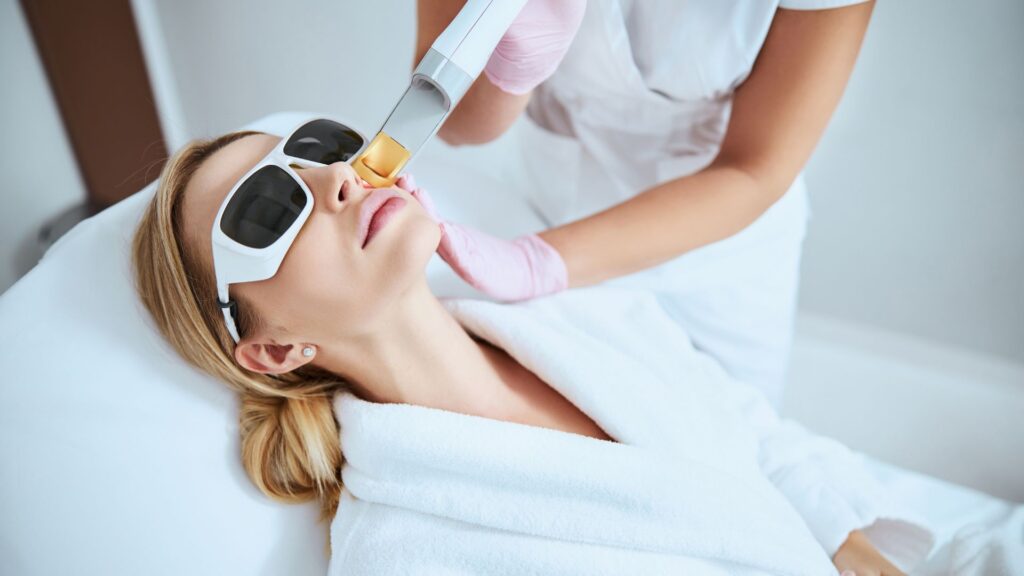
Smooth Skin Is Only a Laser Away
Having skin that is too loose might be embarrassing. There are several things that can put you at risk for loose skin, and once it’s there, it can be hard to treat. Facial and overall skin laxity are common signs of weight loss. Saggy skin can also be caused by the breakdown or loss of dermal collagen and elastin. Saggy skin is a common problem for people who have spent a lot of time in the gym trying to reduce weight.
While anybody can experience skin sagging, it is more common in the elderly. Those who have undergone extreme weight loss are likewise at a higher risk. It’s also possible that underlying medical issues are to blame. It can be difficult to address sagging skin at home, but there are effective skin-tightening alternatives available, ranging from over-the-counter remedies, surgical enhancements to laser treatments.
Skin on the face, neck, or torso can be tightened using a laser by applying heat, plain and straightforward. It’s a great option for people who want to tighten up saggy skin. Skin tightening with a laser is a non-invasive cosmetic technique that can slow the aging process. Skin collagen is warmed by lasers. But there could be potential side effects including scarring.
In this article, the Sirwiss network of dermatologists discusses the benefits of laser treatments for reducing the appearance of sagging skin.
What Prompts Saggy Skin
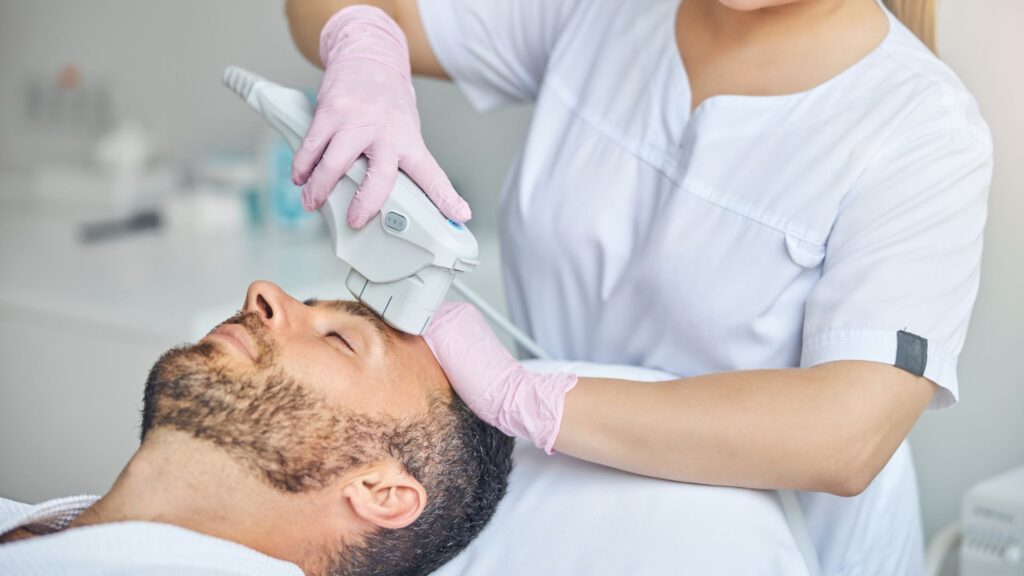
Stretching firm skin and having it snap back into place is a breeze. When this capacity of skin diminishes, sagging results. The sagging of skin can occur just about anywhere. The following are some of the most common places to encounter sagging skin:
- Eyelids
- Jowls
- Chin
- Throat
- Upper arms
- Stomach
There are several causes of saggy skin. They include:
Aging
Elastin and collagen, two proteins made in the dermis, are depleted with aging. Elastin is responsible for the suppleness of skin, as its name implies. It gives you skin that’s both firm and elastic, so it won’t break if you strain it. Fibroblasts have the job of making collagen. Collagen is responsible for skin that is smooth and firm. Collagen’s densely woven fibers are responsible for the skin’s resilience and suppleness. As we become older, we produce less elastin and collagen. Over time, these two proteins can degrade due to things like:
- UV exposure
- Pollutants in the environment, including cigarette smoke
- Certain lifestyle factors, such as poor nutrition and drinking alcohol to excess
Too much sun exposure and not taking care of your skin or health can speed up the process of skin aging. This can make your skin look saggy and wrinkled at a younger age.
Weight Loss
The skin’s collagen and elastin fibers can be damaged by carrying excess weight for a long time. As a result, the skin has less of a chance to tighten after a weight loss. Sagging skin is a common side effect of massive weight loss (100 pounds or more). Sagging skin is more common following drastic weight loss, as that achieved through bariatric surgery. These methods of weight loss often leave patients with excessive quantities of hanging, sagging skin. Your age at the time of weight reduction can have a factor in the severity of skin sagging after weight loss.
Pregnancy
After giving birth, it’s usual for the skin to become lax and sag. Sagging abdominal skin is more common in women carrying twins or triplets than in those carrying a single child. The age of the mother could also be a factor.
Illness
Saggy skin is a symptom of a few different medical diseases. One of these is granulomatous slack skin, an extremely rare form of cutaneous T-cell lymphoma. This disorder is characterized by a slow loosening of skin on the hands, feet, elbows, and knees. Granulomatous slack skin, the most common cause of sagging skin, is notoriously difficult to treat.
Ehlers-Danlos syndrome
Ehlers-Danlos syndrome (EDS) is another genetic connective tissue ailment that causes skin laxity. Sagging, doughy skin is a common symptom of EDS because of a deficiency in collagen formation.
To Reduce Minor Sagging
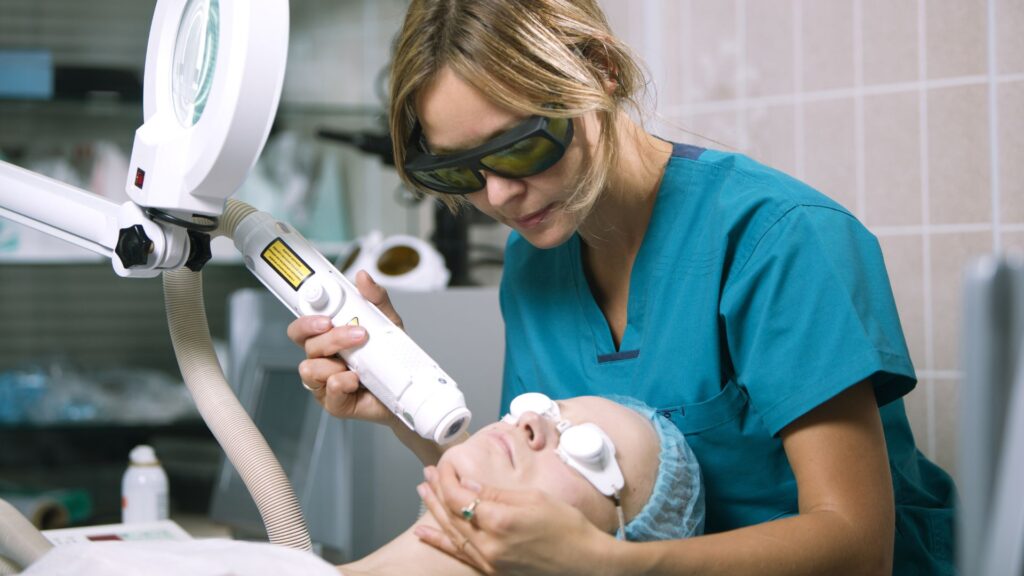
There are solutions you can test on your face and body at home if you have mild sagging or if you are content with more modest effects. Those things are:
Exercise
Exercising can help tighten skin that has loosened after pregnancy or mild weight loss. Minor skin drooping can be concealed by engaging in any physical activity that increases muscle mass or tightens muscles. For instance:
- Weightlifting or resistance training. Muscle gain is facilitated by resistance training with weights, machines, or resistance bands.
- Pilates. Pilates, often called contrology, is an exercise method that emphasizes core strength, gluteal tightness, leg and arm strength, and overall body toning.
- Facial exercise. Facial workouts have shown some promise for reducing droopy skin in the neck, jowls, and under the chin. Yoga practitioners attest that certain poses can tighten lax facial skin. Simhasana (Lion Pose) is a fantastic option to attempt in this regard.
To Reduce Moderate Sagging
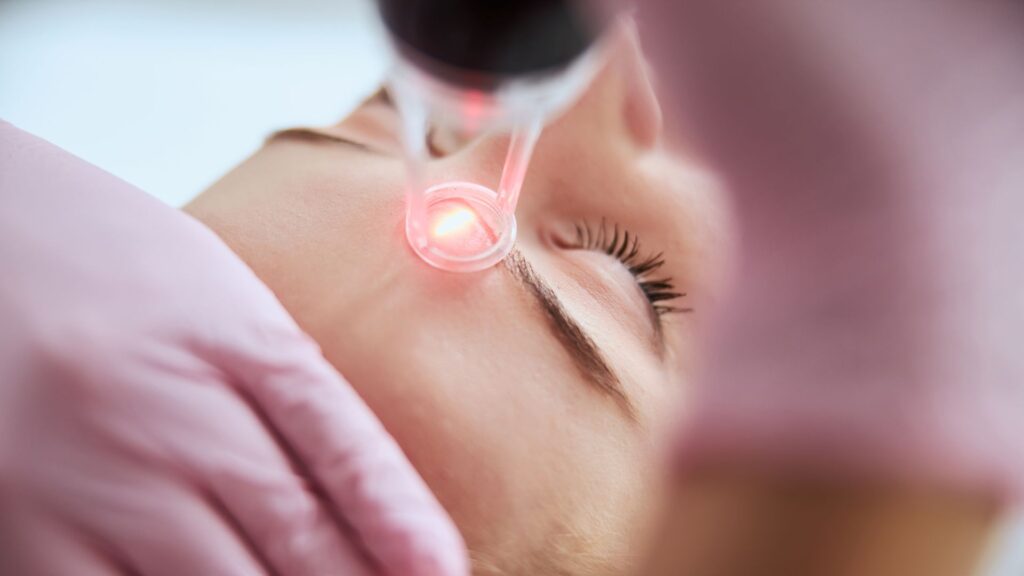
The tone and elasticity of sagging skin can be improved with non-invasive and minimally invasive therapies. They work best when integrated with other preventative measures, such as avoiding harmful habits like smoking and sun exposure. A dermatologist performs these procedures, which include:
- Laser therapy. Collagen production can be stimulated, and skin tone can be enhanced using a variety of laser therapy procedures. Multiple sessions are typically necessary to achieve optimal results. The upper arms, stomach, and other parts of the body can all benefit from laser therapy for a firmer appearance.
- Laser resurfacing. This laser surgery is likewise quite effective, although it is more intrusive and requires a longer recuperation time (about two weeks). When you get a laser resurfacing, the top layers of skin are removed, and the heat is directed into the deeper layers of skin. Laser peeling is a common name for this procedure.
- Microfocused ultrasound (MFU). This method helps stimulate collagen formation and tighten sagging skin by heating its deeper layers. The skin’s firmness and elasticity may improve gradually over the course of several months. Ultrasound’s effects are temporary, usually wearing off after a year.
To Reduce Significant Sagging
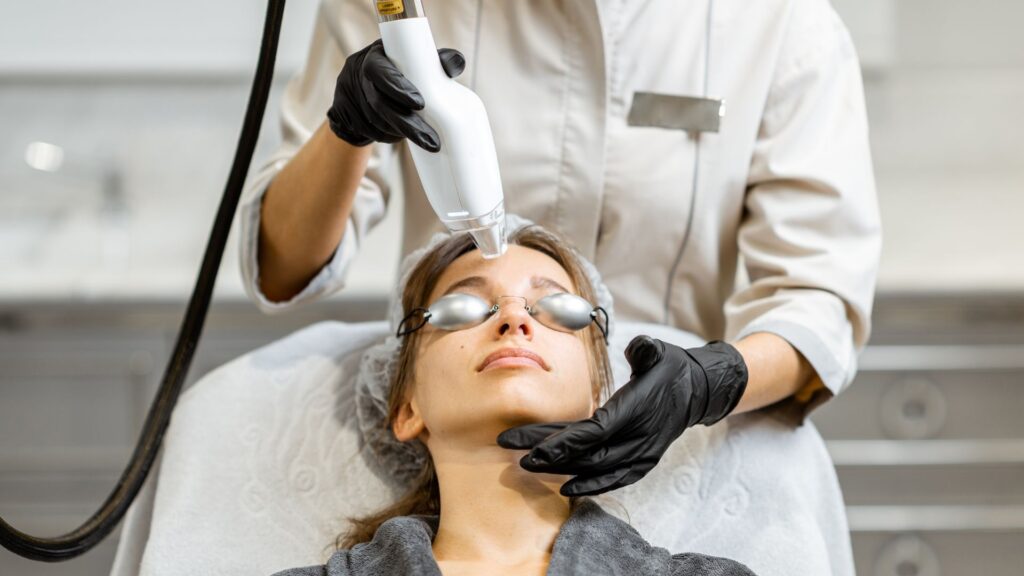
It is common practice to recommend surgical procedures to remove excess skin after bariatric surgery. They are usually considered elective cosmetic operations; therefore, insurance may not cover the costs. The term “body contouring” is used to describe these operations. Scarring is possible after a body contouring operation, especially on the upper arms and other exposed skin. The period needed to recover from them is also rather long, perhaps from two weeks to a month. One or more sections of your body can be treated, depending on your preferences.
Types of body contouring surgeries include:
- Tummy tuck (abdominoplasty)
- Arm lift surgery (brachioplasty)
- Face lift
- Neck lift
- Lower body lift
- Upper body lift
- Medial thigh lift
There is no medical ailment associated with sagging skin, and some people may not even notice it. Some people may find it discouraging or damaging to their sense of pride. Saggy skin that doesn’t improve with at-home remedies warrants a trip to the doctor.
What Is Laser Skin Tightening?
Tightening the skin with a laser is a minimally invasive and non-surgical option. There is minimal discomfort during the process. It’s not limited to any specific part of the body, but common spots are:
- Stomach
- Neck
- Face
- Jawline
Extreme heat from the laser is tolerated by the skin because it promotes the body to produce more collagen and elastin, leading to smoother, less crepey skin with a more youthful appearance. It’s most effective for those between the ages of 30 and 65, and it may even be preventative for those younger than that who are just starting to show signs of sagging. Surgery may be preferable if your skin is excessively saggy.
How Does Laser Skin Tightening Work?
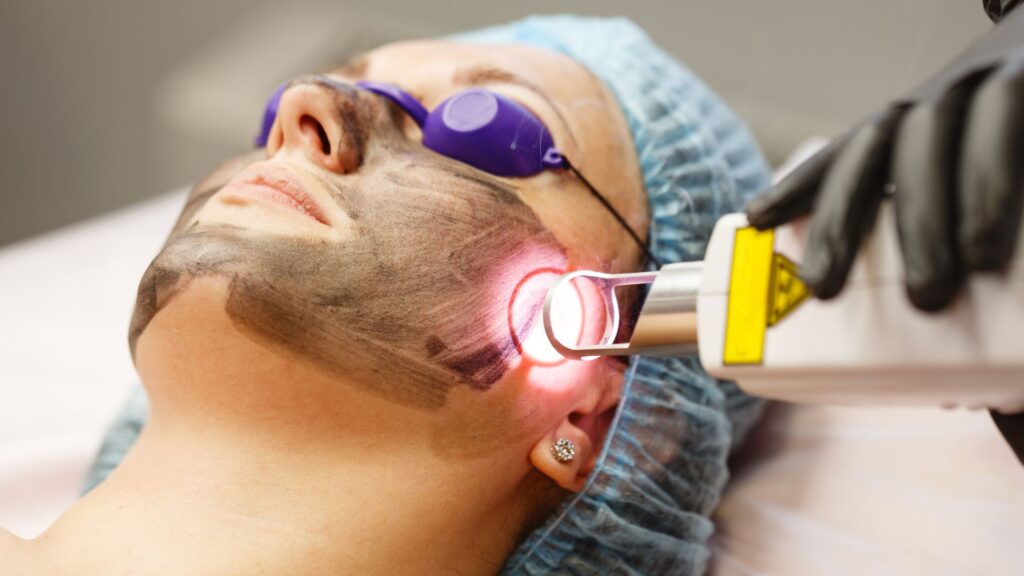
In order to tighten the skin, a laser emitting infrared light is passed over it. The laser is quite hot, comparable to the sensation of a hot stone massage, and it tightens the skin by heating the collagen below the surface. Radiofrequency and ultrasound technologies are frequently employed for skin tightening as well, despite the fact that they are not lasers.
Procedures for Skin Tightening
While all skin tightening methods provide comparable results, there are important distinctions between them.
Ultrasound skin tightening
- Work wells for the face, chin, neck, and chest areas
- Treats early signs of aging
- Takes between 30 and 90 minutes
- May be slightly uncomfortable for some and quite painful for others
- Typically requires premedication with nsaids, narcotics, or topical numbing agents
- Little to no downtime
Radiofrequency skin tightening
- Not A True Laser
- Treats The Skin Sub Dermally
- Uses Radiofrequency (RF) To Release Heat Energy into the Skin
- Typically, Safe for All Skin Types
- In-office Procedure That Has Little Associated Discomfort and No Down Time
- Can Also Be Combined With micro needling, But This Will Often Require More Downtime Depending on How Aggressive the Treatment
Intense Pulsed Light and Radiofrequency Combination
- A Hybrid Option That Treats Deep Layers of Skin
- Gradual Results
- No Discomfort or Downtime
- Can Cause Post-Inflammatory Pigmentation in People with Darker Skin Tones
The method is the same for all three. You’ll probably be doing office work while wearing goggles. The laser beam’s heat may be uncomfortable, but it shouldn’t be painful. The time required for the operation ranges from around 30 to about 90 minutes, depending on the size of the area being treated.
Are There Any Risks or Side Effects?
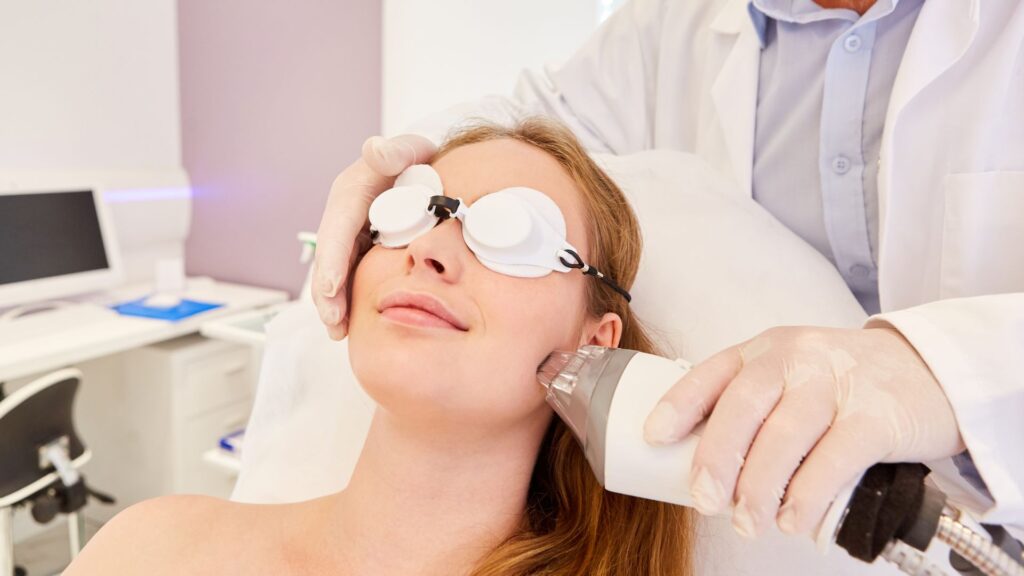
When compared to other cosmetic procedures, such as a face lift, the risks associated with laser skin tightening are less. It’s also much less effective than having plastic surgery done on your face. Only a cosmetic dermatologist or other skin care specialist with extensive training and experience should do the procedure. Consult your physician if you have skin cancer or are on any form of acne medication. Laser skin tightening is safe, but pregnant women shouldn’t get it. Rare adverse effects may include:
- Redness
- Swelling
- Tingling
- Scarring
- Changes In Skin Color
What to Expect After Laser Skin Tightening
The results of your first laser skin tightening treatment should be seen right away. Each successive treatment will yield more noticeable benefits. Since the laser is used for the entire operation, there will be no incisions and your recovery time will be minimal. Some little swelling or redness may persist for a few days following the surgery; this is typical and will go away on its own. The effects are temporary, although they may linger for a number of years. Appointments for upkeep will likely be required on a periodic basis.
Preparing for Laser Skin Tightening
Make sure you’re always protecting your face and neck from the sun in the weeks leading up to your skin tightening operation. Don’t have any chemical peels or facials in the week leading up to your session, and don’t wear any skincare or makeup.
Laser skin tightens and contracts skin using precise laser frequencies. Most people utilize ablative or non-ablative laser skin tightening. Surgery causes hyperpigmentation, pain, and edema. Laser skin tightening can also cause side effects in darker skin tones. Consult a doctor before choosing a laser skin tightening procedure. Doctor or medical expert referrals are sometimes the sole choice. Lasers can tighten sagging skin without invasive cosmetic surgery. Consult a trusted dermatologist before undergoing laser treatment. Recognize that you’re investing, yet the result matters.